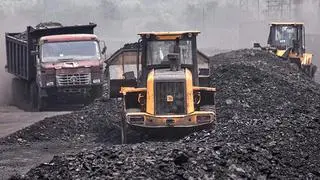The RBI credit policy had no surprises. Status quo was maintained on rates, the stance and the voting pattern. The commentary was virtually unchanged and hence bond yields were not affected.
The rationale put across for keeping the status quo is important because there is a school of thought which believes that not cutting the repo rate can hinder growth. The RBI has reiterated that growth in India is robust and that the way forward is only upwards, and hence it can focus fully on inflation.
The growth projection for next year remains unchanged at 7 per cent. This means that even while it is sanguine on the factors that will be driving growth in FY25, it prefers to play cautious until some data points are known. It may be expected that during the course of the year GDP forecast can be upgraded.
The RBI believes that two militating factors to growth in the past will be reversed. The first is rural consumption which has lagged. A very good rabi harvest topped with a normal monsoon, and hence robust kharif crop, will lead to rural incomes increasing. Rural demand has been a headwind for most companies in the consumer goods space in the last two or three years.
Private investment
The other engine which is to fire is private investment. True, it has worked in specific sectors like cement and steel where the front-end was government capex. But this needs to get broad based. Here the RBI has indicated that rising demand and better capacity utilisation will automatically lead to higher investment in a broader manner.
On inflation, the RBI has maintained a forecast of 4.5 per cent. The quarterly numbers are also almost unchanged at 4.9 per cent, 3.8 per cent, 4.6 per cent and 4.5 per cent — all under 5 per cent. Here there can be a counter-view that given the intense heat predicted, the possibility of food inflation spiking in Q1 looks likely before the onset of the monsoon. The reservoir levels are down to 35 per cent of capacity. The base effect, however, will support a lower inflation number, though prices of some products could increase. Vegetables in particular could be susceptible to this heat; and hence higher food inflation is possible.
But the significant point made by the RBI is that the central bank will work to bring inflation down to 4 per cent. This means that numbers like 4.5 per cent or thereabouts will not be satisfying, even if they are comforting. Now, what can be gleaned from this statement of RBI?
One way of looking at it is that there will not be a rate cut unless the RBI is convinced that inflation is moving asymptotically to the 4 per cent mark. Q3 inflation at 3.8 per cent can be a trigger. But in the third and fourth quarters inflation is set to rise to 4.6 per cent. A conclusion to be drawn is that inflation less than 5 per cent is a necessary condition for a rate cut.
Therefore, August can be the time for the first rate cut provided inflation plays out in the expected manner. However, given that inflation is slated to rise subsequently, the RBI will be conservative with the quantum of rate cut and probably stick to 25-50 bps for the year.
Overall, the RBI Governor’s statement does smell of optimism. India is in a ‘sweet spot’ as it has over-performed over the years and on target to accelerate in future. The domestic and external sectors have done well, reflecting astute intervention by the central bank to manage volatility. This can be assumed to be the role that the RBI will continue to play in FY25 too.
The writer is Chief Economist, Bank of Baroda. Views are personal








Comments
Comments have to be in English, and in full sentences. They cannot be abusive or personal. Please abide by our community guidelines for posting your comments.
We have migrated to a new commenting platform. If you are already a registered user of TheHindu Businessline and logged in, you may continue to engage with our articles. If you do not have an account please register and login to post comments. Users can access their older comments by logging into their accounts on Vuukle.